A Century of Salen Family Shipping
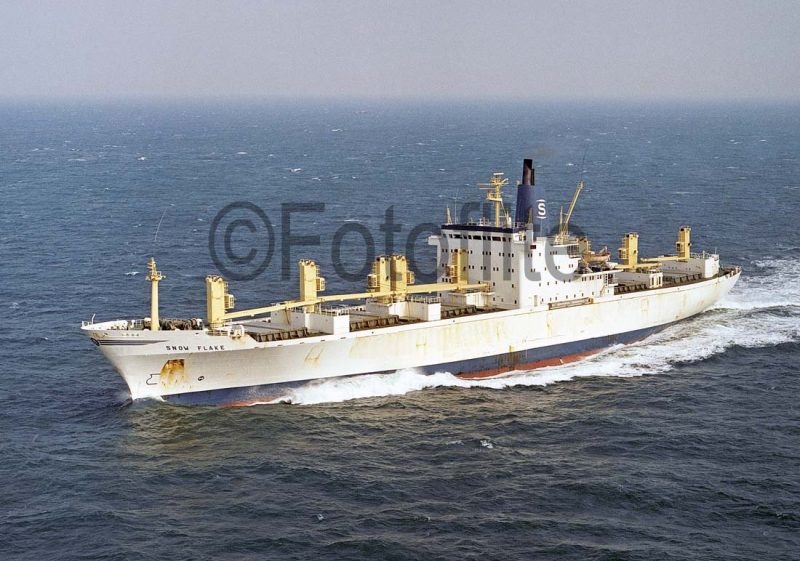
Many readers will remember the collapse and bankruptcy of Salenrederierna (Salen Shipping) at the end of 1984, which had become the largest Swedish shipowner and shipbuilder, overtaking Brostroms in 1968. However, the Salen family in the form of several descendants of Sven Salen, have rebuilt their shipping interests, like a phoenix rising from the ashes, to own and technically manage the three cruise ships of the Noble Caledonia cruise company, and also have interests in Argonaut A/B dry bulker operations, and Higman Marine tug/barge operations in the U.S.A., the third largest operator on intracoastal waterways. In 2015, the family celebrated the centenary of their businesses, which over the thirty years from 1985 have encompassed shipping, air travel, food, banking and many other business sectors.
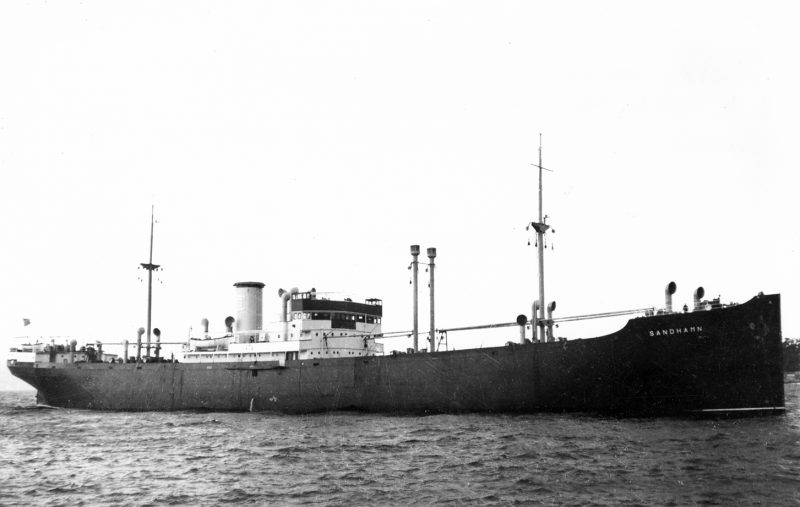
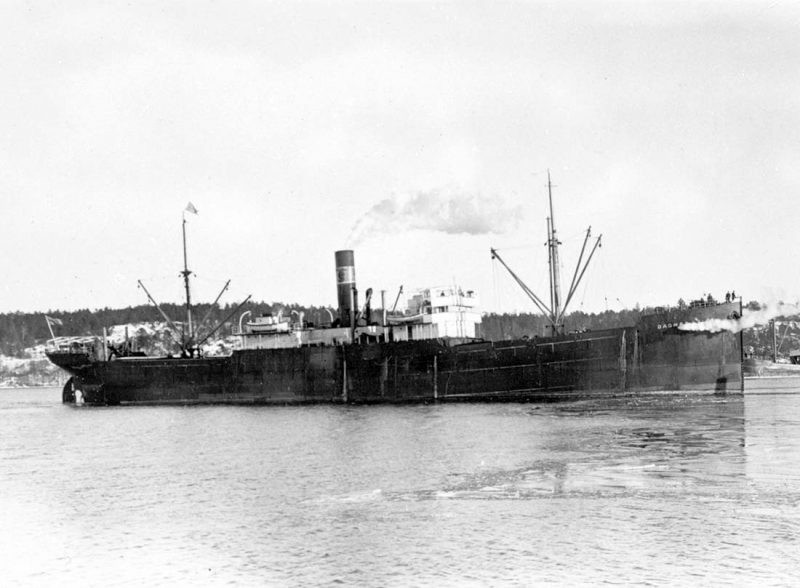
Sven Salen
Sven Salen was born on 7th November 1890 at the town of Boras in Vastra Gotaland County in Central Southern Sweden just over forty miles from the outskirts of Gothenburg, the second largest city in Sweden. He was the youngest of three brothers and after graduating in 1909, he received training for a year at the Gothenburg Trading Institute and then joined the Gothenburg Trading Bank. After the outbreak of World War I in August 1915, shipping in the Baltic, Kattegat and Skagerrak suffered losses from mines, driving up the freight rate market. At the end of 1915, Sven Salen decided to become a shipowner, purchasing the small engines aft, bridge ‘midships, coaster Robur of 200 grt, built by the Lofholmsvarvet yard at Stockholm. A few months later in 1916, a second small coaster named Ida was also purchased, but Robur suffered damage from a marine accident and was sold in 1916.
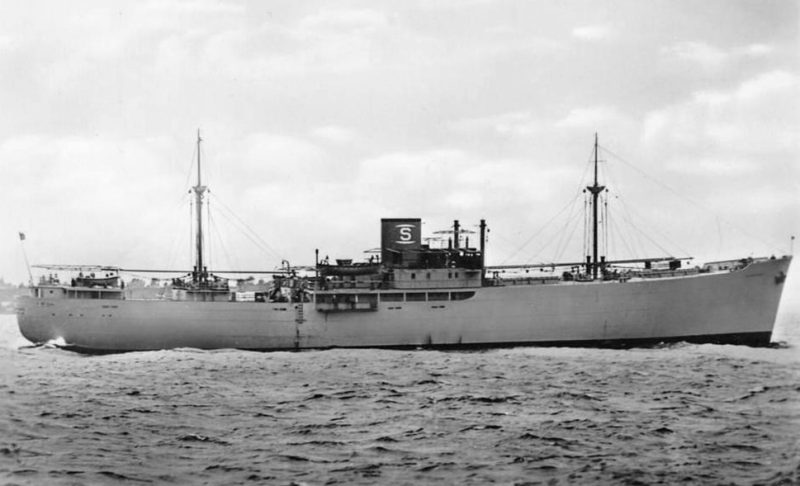
The fully rigged sailing ship Puerto Montt of 1,506 grt was purchased in 1917 on the American west coast from a German shipowner who had emigrated to Chile. The transaction took two months to complete before Sven Salen was able to rename her as Transocean, and she then sailed worldwide until sold to a Gothenburg shipowner one month before the end of the war at a good profit. She had been completed as Skelmorlie in December 1883 by Robert Duncan and Company at Port Glasgow for Hunter, Brown and Company of Greenock on dimensions of length 254.1 feet, moulded beam of 39.0 feet, and depth of 22.9 feet, with a fo’c’stle of length 39 feet and a poop deck of length 38 feet. She had three masts with an extended bowsprit holding her figurehead, together with a grey hull and a full outfit of sails.
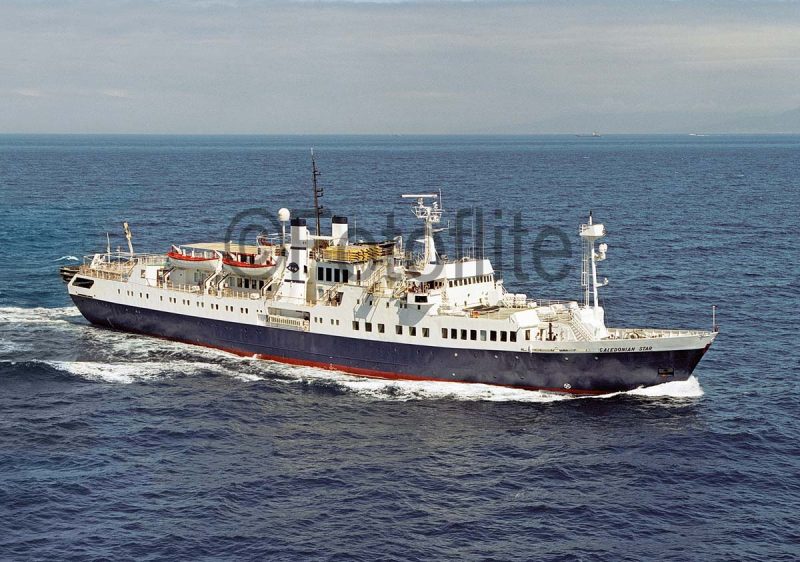
The fully rigged sailing ship Eros of 1,259 grt was purchased just after the end of World War I, and had been built in 1891 by the Dubigeon yard in Nantes as Los Adelphes for a French owner. Eros was sold in 1921 but was badly damaged by storms during a voyage from the U.S.A. to South Africa, with her cargo both late and unsaleable, and Sven Salen had to repay the monies that the buyer had paid in advance. Five other small sailing ships of between 200 grt and 400 grt were also purchased by Sven Salen during the war with the names of Jakob, Knut, Susanne, Gustaf and Nanna.
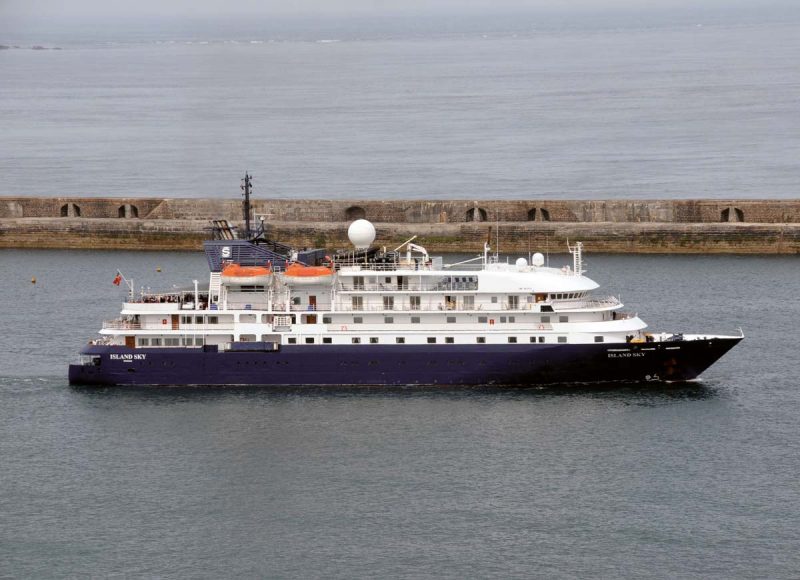
In 1922, Sven Salen met Carl Matthiessen of Norway, who intended to start importing bananas into Sweden. This cargo is a risky operation as bananas require a cool temperature during their voyage from the West Indies so as not to rot. The first cargo of bananas was ruined after transhipping in Rotterdam on the way to Gothenburg, thus Sven Salen and Carl Matthiessen decided to transport the bananas in their own ships. Six Scandinavian owned ‘Mosquito’ fruiters that had carried cargoes from the Caribbean to American ports for six months each year on charter to United Fruit Company of the U.S.A. were purchased between 1924 and 1936. Deep sea reefers transported the bananas to Continental ports, and the sextet moved the cargo from Rotterdam or Bremerhaven to Gothenburg, Copenhagen, Stockholm and Oslo.
The first fruiter purchased was the vessel Chr. Matthiessen of 1,056 grt in 1924 for Banantransport A/B, a Salen company. She had been built by A. Vuijk and Son at Capelle Ysel in Holland in 1907 as Thora and was powered by a triple expansion engine supplied by G. Grey of South Shields. The full list of Sven Salen fruiters owned between 1926 and 1939 included the following ships:-
- Jamaica of 970 grt built in 1897 as a quarterdecker at Sunderland with a triple expansion steam engine by John Dickinson and Sons Ltd., and owned between 1926 and 1933.
- Sigrid Matthiessen of 1,999 grt built by the Laxevag yard in Bergen in 1903 as Vera with a triple expansion steam engine supplied by the builder, and owned between 1928 and 1946.
- Sverre Nergaard of 1,030 grt built in 1900 by Bergens Mek Verksted as Mount Vernon, and owned between 1929 and 1946.
- R.H. Sanders of 1,255 grt and completed in August 1931 as the first purpose built banana carrier in the fleet by the Fredrikstad yard as a shelterdecker with a cruiser stern and equipped with refrigerating machinery and the latest radio and navigating equipment and strengthened for navigation in ice. She was powered by a double compound steam engine supplied by the builder, and was in the fleet from 1931 to 1933. She was on charter in 1932 with bananas from Italian Somaliland to Italy.
- Lillie Matthiessen of 986 grt and completed by Stavanger Shipbuilding and Dock Company in 1905 as Imperator with a triple expansion steam engine supplied by the builder. She served Sven Salen for twenty years from 1933 to 1953.
- Carl Matthiessen of 1,576 grt, formerly the engines ‘midships vessel Commodore Rollins. She was purchased in 1936 under the name of Columbus, and was sold in 1942 and renamed Dido and survived the war.
- Banana of 1,248 grt purchased in 1939 and had been built back in 1899 by Lobnitz on the Clyde as Beira, becoming Ryaa in 1937. She was sold off in 1951.
- Jamaica (2) of 1,035 grt purchased in 1939 as Stavangeren and had been built back in 1908 by the Stavanger Shipbuilding and Dock Company. She survived the war for Salen and was sold off in 1952.
During the 1930s, the friendship between Sven Salen and Jacob Wallenberg of the Enskilda Bank was decisive for the future of his shipping business. The two men were for many years the only directors of the shipping business. The Salen fleet in 1932 was composed of five ships, with the deep sea tramping company A/B Pulp set up in 1934 by Sven Salen, and Fernglen of 4,430 grt was purchased from Fearnley and Eger of Oslo and renamed Sandhamn. She had been built by the Akers yard in Oslo in 1929 and was a twin screw motorship powered by twin six cylinder four stroke single acting diesels supplied by her builder. The older steam tramp Valdivia of 3,830 grt was also purchased in 1934 and named after his wife as Dagmar Salen. She had been launched on 9th August 1907 at the John Priestman yard in Sunderland as Alden for Kjaer and Isdahl of Bergen and was renamed Osterdal in 1916. She was owned for two years by Salen, and survived World War II until she arrived for breaking up at La Spezia in November 1958 under her original name of Alden.
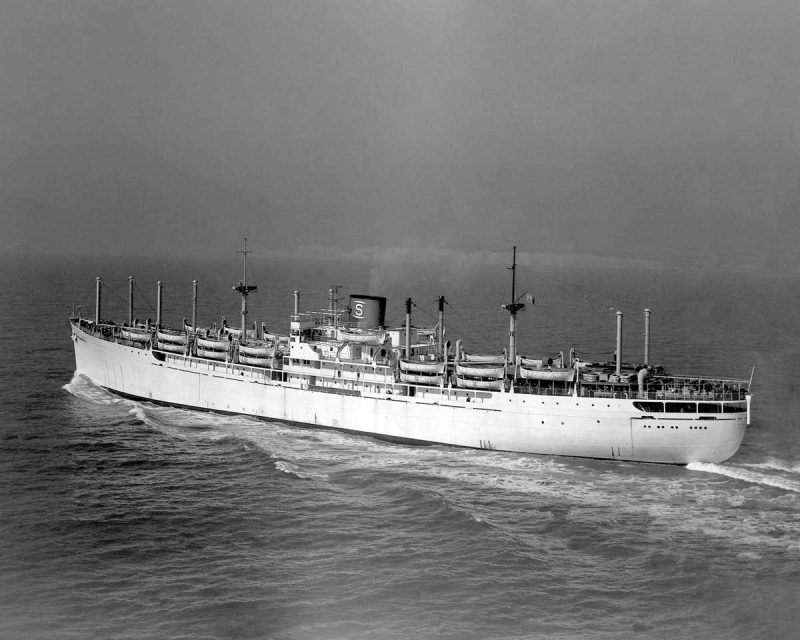
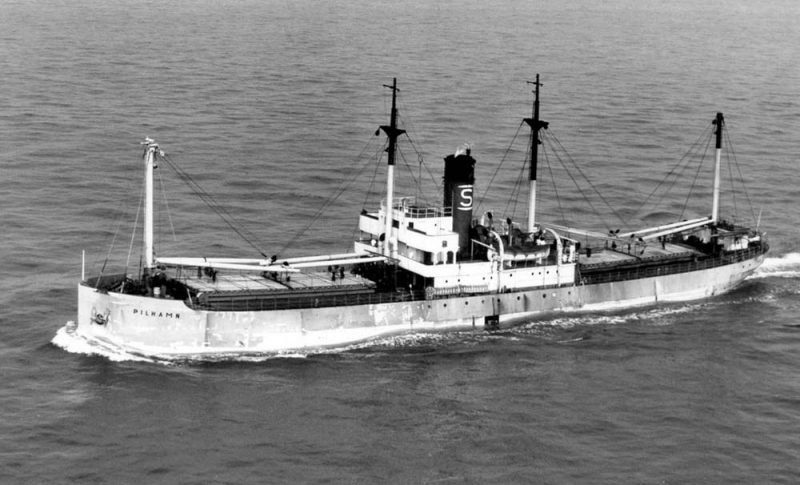
The new shelterdecker cargo-liner Dagmar Salen of 9,500 dwt with refrigerated capacity was completed in 1937 by the Oresundsvarvet yard in Sweden with a cruiser stern, five holds and carrying vegetable oil in wing tanks and tanks in way of the engine room tunnels, and was strengthened for navigation in ice. She was registered under Rederi A/B Pulp and was powered by a quartet of six cylinder Atlas diesels with electro-magnetic slip couplings and single reduction gearing. She carried eight passengers in very good cabin accommodation, and had dimensions of overall length 453.7 feet, moulded beam of 57.2 feet, and depth of 21.1 feet, with a fo’c’stle of length 40.0 feet. Dagmar Salen ran with Sandhamn and Korshamn, purchased in 1939, to Pacific ports of Canada and the U.S.A. for lumber and fruit cargoes. Dagmar Salen survived the war and was sold in 1948, but a sister cargo-liner had also been ordered in 1939 from the Eriksberg yard and was completed as Sven Salen in 1941 with a further sister Christer Salen in 1945 from the Eriksberg yard. Sven Salen was sold in 1954, and Christer Salen was sold in 1956 to German owners and renamed Corona, becoming Philippine Progress in 1967 and arrived on 18th November 1972 at Kaohsiung for breaking up.
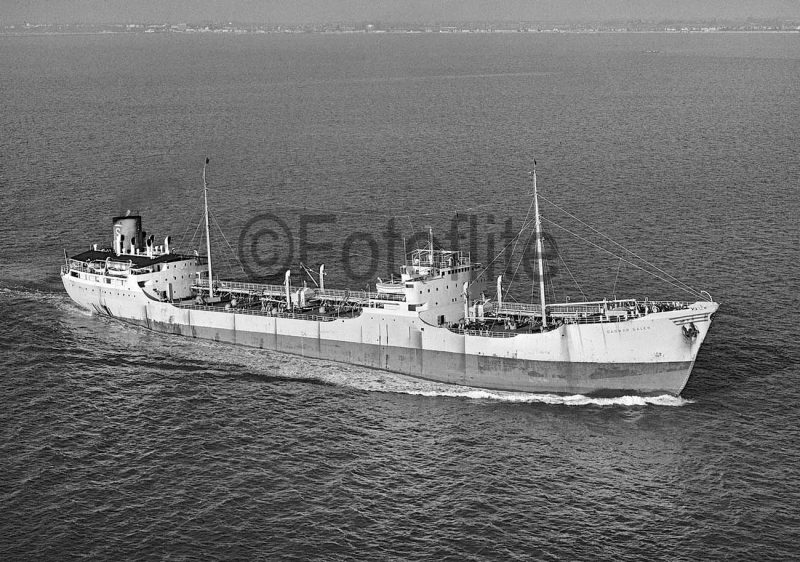
World War II
The Salen fleet on the outbreak of World War II was composed of seven deep sea and coastal vessels, with seven more purchased by the end of 1939 named Ellinor of 1,122 grt, Margareta of 1,272 grt, Emma of 990 grt, Sara of 1,164 grt, Kristina of 1,243 grt, Johanna of 1,230 grt and Magdalena of 1,272 grt, and of similar size to the banana reefers. The funnel colours of the fleet at this time were yellow with a central green band. There were three war losses:-
Emma sunk by collision with French steamer Hebe on 3rd June 1940 while on a voyage from Hull to Best with coal.
Korshamn, built as the motorship Glenluce of 6,683 grt in 1920 for Glen Line, and purchased in 1939 for the Sweden to West Indies service, was torpedoed and sunk on 17th March 1941 while on a voyage from New York to Liverpool with 7,979 tonnes of general and special cargo, 11n crew saved but 26 lost.
Margareta was torpedoed and sunk on 9th July 1942 off Arkosund while on a voyage from Germany to Koping with coke, 14 of her 18 crew were lost.
Sven Salen had become the sole owner of Banantransport A/B in 1940 with Carl Matthiessen remaining as Managing Director. Banana imports into Sweden had risen rapidly from only 500 tonnes in 1920 to 10,000 tonnes in 1930, but the German blockade of the Baltic, Kattegat and Skagerrak with mines effectively cut off Sweden from imports of most commodities by 1940. Swedish iron ore was transported in massive quantities during the war across the Baltic to feed the German iron and steel plants and their huge war effort. One of the office staff of another company that shared space with the Sven Salen office in Strandvagen in Gothenburg was sent in 1940 to Budapest to help with the effort to save Hungarian Jews.
Sven Salen, despite the blockade except for food provisions, strengthened his economic base by the purchase of the Ekensberg shipyard in Stockholm in 1942, which became part of the portfolio of Salen companies until 1970. At the end of the war, the Swedish diplomat, Count Folke Bernadotte of Wisborg (1895-1948), negotiated with German high ranking officers, including Himmler of the Nazi S.S., for the release of 31,000 prisoners from German concentration camps. Sven Salen was given the responsibility to transport some of these survivors from German concentration camps to Sweden from Lubeck to Trelleborg. One thousand camp prisoners were transported in this way on 3rd May 1945 on the Salen ships Lillie Matthiessen and Magdalena.
The new banana and fruit carrier Sandhamn of 3,140 grt and 3,090 dwt had been completed in August 1941 by the Oresundsvarvet yard at Landskrona in Sweden as a shelterdecker with two decks and a third deck in the holds forward of the machinery spaces. She was part electrically welded on the shell butts and deck plating and was powered by four Atlas diesel engines to give a high service speed of 15.5 knots. She was rebuilt in 1954 with accommodation for a few passengers and given new MaK diesel engines, and served Salen until 1964.
Post World War II And Oil Tankers
The former C3 type American cargo ship Mormacland, completed in 1940 and converted into the British escort carrier Archer at the end of 1941, was purchased by Sven Salen in 1948 and converted into the refugee transport passenger ship Anna Salen after an austerity refit. She was registered under Rederi A/B Pulp and given a larger number of lifeboats with her superstructure extended from fo’c’stle to stern and a revised gross tonnage of 11,672. She transported displaced persons from European ports to Canada and to Australia until sold in 1955 to Greek owners and renamed Tasmania for the Australian service. The standard ‘C2’ type Sea Witch was purchased in 1947 and renamed Axel Salen, and Selma Salen of 8,435 grt was completed in 1948 by Cantieri Navale Franco Tosi at Taranto as a Swedish war compensation replacement vessel. A Canadian ‘Laker’ built back in 1917 by the Toledo Shipbuilding Company as Lakeshore was purchased in 1947 and renamed Pilhamn and served Salen for seven years until sold off.
The Salen fleet was thus rebuilt with second hand purchases into a fleet of a dozen ships by 1950. Sven Salen then developed a relationship in 1951 with the Chase Manhattan Bank in New York for the purpose of obtaining credit for building supertankers with security against long term charters to oil majors. The first tanker was Dagmar Salen of 16,500 dwt completed in 1951 by the Bremer Vulkan yard at Vegesack. The following tankers then entered the big Salen tanker fleet:-
- Zelma Salen of 15,825 dwt completed by the Oresundsvarvet yard in 1952 and purchased two years later.
- Axel Salen of 16,225 dwt completed by Kockums at Malmo in 1946 and purchased ten years later.
- Carlshamn of 13,450 dwt laid down in 1941 and completed in 1945 by Kockums and purchased ten years later. She was the first ship to wear the blue funnel with a white ‘S’ and a curved line above and below the letter.
- Seven Stars of 24,800 dwt completed in 1957 by the Eriksberg yard
- Seven Seas of 24,800 dwt completed in 1957 by the Eriksberg yard
- Seven Skies of 19,250 dwt completed in 1958 by the Gotaverken yard
- Sea Saga of 34,150 dwt completed in 1958 by the Gotaverken yard
- Sven Salen of 40,460 dwt completed in 1958 by the Gotaverken yard
- Sea Song of 39,900 dwt completed in 1959 by the Oresundsvarvet yard
- Sea Swallow of 38,675 dwt completed in 1960 by the Mitsubishi yard at Yokohama
- Sea Spirit of 40,550 dwt completed in 1960 by the Kockums yard
- Sea Spray of 40,550 dwt completed in 1960 by the Kockums yard
- Sea Serpent of 40,550 dwt completed in 1961 by the Kockums yard
- Sea Scout of 40,550 dwt completed in 1962 by the Kockums yard
- Sea Sapphire of 60,328 dwt completed in 1963 by Chantiers La Ciotat in France
- Dagmar Salen of 60,328 dwt completed in 1963 by Chantiers La Ciotat in France
- Seven Skies of 97,550 dwt completed in 1965 by Kockums
- Seven Seas of 97,550 dwt completed in 1967 by Kockums
- Seven Stars of 97,550 dwt completed in 1967 by Kockums
- Sea Spirit of 121,185 dwt completed in 1966 by Kockums
- Sea Scout of 121,185 dwt completed in 1966 by Kockums
- Sea Spray of 121,185 dwt completed in 1966 by Kockums
- Sea Sovereign of 210,550 dwt completed in 1969 by Kockums
- Sea Serpent of 255,350 dwt completed in 1972 by Kockums
- Sea Swan of 255,350 dwt completed in 1972 by Kockums
- Sea Soldier of 255,350 dwt completed in 1972 by Kockums
- Sea Spring of 255,350 dwt completed in 1972 by Kockums
- Sea Splendour of 255,350 dwt completed in 1972 by Kockums
- Sea Scout of 260,158 dwt completed in 1973 by Kockums
- Sea Swift of 260,150 dwt completed in 1973 by Kockums
- Parcel tankers Anco Span of 23,550 dwt, Anco Spring of 19,540 dwt and Anco Spur of 23,550 dwt owned during 1967 to 1973
Further Banana And Fruit Reefers Expansion
The market share of the Salen fleet in oil and reefer transportation had become one of the highest in the world by 1960, and had then eclipsed the Brostrom fleet of Sweden in 1968 as the largest fleet in the country. This had been greatly helped by a forward looking Managing Director named Sture Odner, who was appointed in 1955, and who managed to place the Salen reefer fleet at the pinnacle of the largest world reefer transport operation, managing many reefers for other companies including Cunard Line. Imports of bananas into Sweden had in 1946 increased to 21,000 tonnes after a hiatus during the war. The Salen reefer fleet then expanded worldwide and included perishable cargoes of all descriptions including fish, fruit, and frozen whale meat for Japan. The reefer turnover doubled during the 1960s, and in 1972 a structural reorganisation of the Swedish reefer business occurred with the merger of A/B Banantransport of Salen with the A/B Sanden Group, which owned the Johnson fleet, to create A/B JS Saba. Banana imports alone in 1978 reached the high figure of 80,000 tonnes, enough for ten kilos of the fruit for every Swedish person per year.
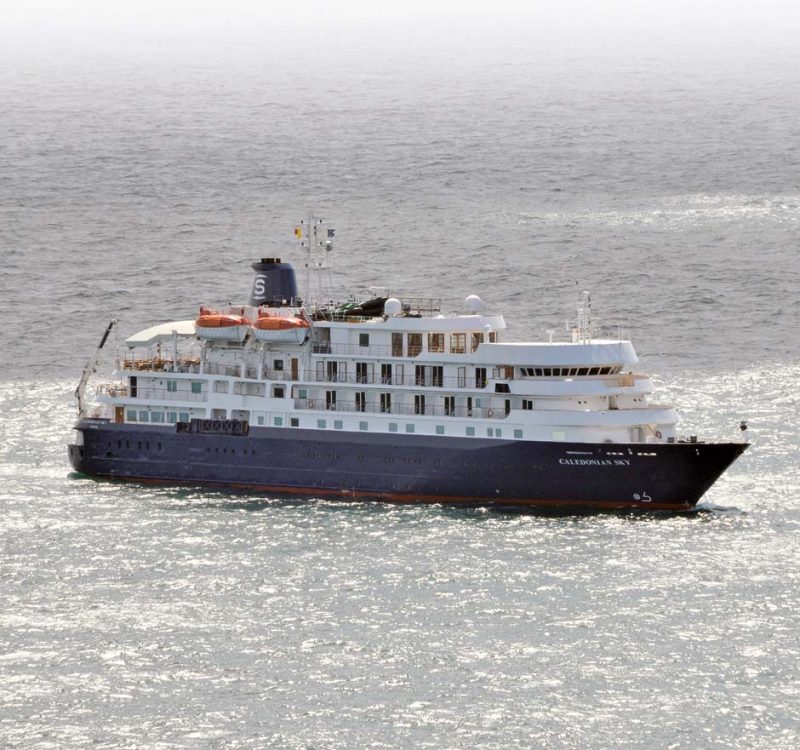
An interesting reefer was purchased in 1958 in the former Antigua of 8,084 grt completed in 1932 by the Bethlehem Steel yard at Quincy (Mass.) for the United Fruit Company of the U.S.A. She was requisitioned in 1942 by the War Shipping Administration for the war effort, and returned to United Fruit in 1946. She was renamed Tortuga on purchase by Salen, and broken up in 1964 at the end of her Salen service.
The post-war Salen reefer replacement programme got underway in 1952 with ships built by the Ekensberg, Eriksberg and Gotaverken yards in Sweden. Arawak of 5,650 dwt was able to carry a dozen First Class passengers, and was followed by the similar Carib of 1953, Cayman of 1956, San Blas of 1955, Hispaniola of 1956, Antigua ex Tortuga, Buccanero built in 1940 and purchased in 1959, Atlantide of 1960, Atitlan of 1960, Antigua (2) of 1960, Ballade of 1961, Bolero of 1961, Barcarolle of 1962, Darien ex Peruvian Reefer built in 1954 and purchased in 1963, Dolores ex Brazilian reefer built in 1954 and purchased in 1963, Domingo ex Mexican Reefer built in 1953 and purchased in 1963, Antilope of 1963, Trubadur built as Brita Gorthon in 1957 and purchased in 1963, Tarantella built as Joh Gorthon in 1947 and purchased in 1963, Carib (2) of 1964, Albany of 1964, Argonaut of 1964, Ariel of 1964, Arawak (2) of 1965, Arawak of 1965, and San Bruno, San Benito and San Blas (2) all of 1967.
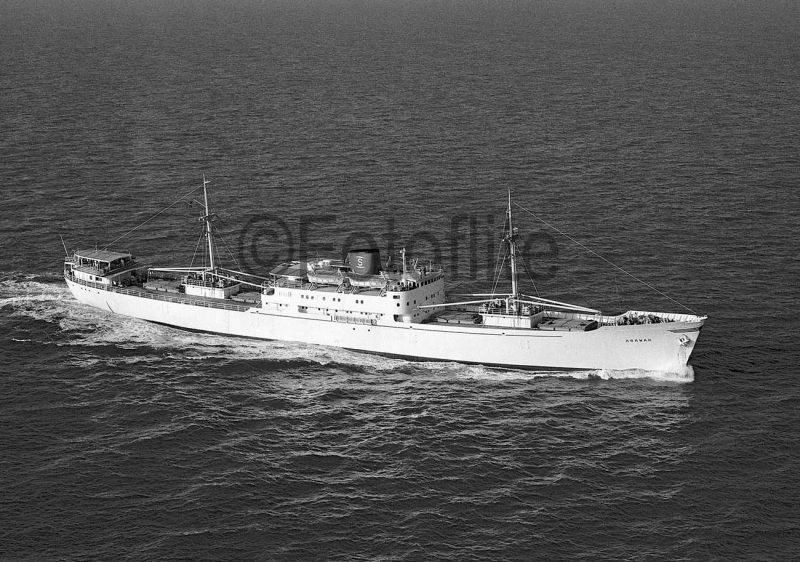

This new thirty ship reefer fleet was then followed by the classic eight vessel ‘Snow’ series of Snow Ball, Snow Crystal, Snow Drift, Snow Flake, Snow Flower, Snow Hill, Snow Land and Snow Storm of 12,580 dwt, all completed by Chantiers La Ciotat in the south of France during 1972/74, with fast service speeds of 22 knots from eight cylinder Sulzer diesel engines. They had five holds and five hatches served by eight cranes of five tonnes capacity, with the holds also accessed by five side ports. A further six ‘Winter’ class vessels followed during 1979/80 in Winter Moon, Winter Sea, Winter Star, Winter Sun, Winter Water and Winter Wave of 15,200 dwt from the Gotaverken Arendal A/B yard in Gothenburg. They could carry 240 TEU of containers and had four holds and seven hatches served by four cranes of sixteen tonnes capacity, with the holds also accessed by four side ports. They were powered by six cylinder two stroke B & W oil engines developing 20,500 bhp to give a service speed of 22 knots. Four vessels of the octet of the ‘Spring’ reefer class of 10,000 dwt followed in 1983/84 from Korean shipbuilders named Spring Ballad, Spring Bird, Spring Blossom, and Spring Dream for Salen Reefer Services A/B. They had four holds and seven hatches and could carry 290 TEU of refrigerated containers, and were equipped with four cranes of sixteen tonnes capacity, with a service speed of eighteen knots from six cylinder B & W oil engines of 11,600 bhp.

Takeover Of Rex Line
Rederi A/B Rex had two periods of shipowning, the first was set up in 1903 by Waldemar Beijer in Stockholm with the first small steamer being Nord of 1,843 grt built by the Grangemouth and Greenock Dockyard in 1900 as Maria Goriainova. A larger Nord of 2,204 grt followed in 1906 from the Kockums yard with a quarterdeck of length 76 feet on an overall length of 280 feet. Tord of 1,313 grt was completed in August 1907 by the W. Harkess & Sons Ltd. yard at Middlesbrough with a bridge deck of length 136 feet, and Waldemar of 1,635 grt was purchased a few years later, having been built in 1908 by the Nordseewerke yard at Emden as Anna Podeus. Four Baltic traders were owned on the outbreak of World War I, the last two including Tord were sold off in 1917.
The second period of shipowning began in 1923 with Waldemar Beijer as shipowner and Knut Malkolm Kallstrom as managing director. Knut had previously worked with Beijer from 1906, and the Kallstrom family remained as Chairmen and Managing Directors of Rederi A/B Rex until the company was taken over by Salen in 1967. On 17th February 1967, the Rex Line Group was bought up by Salenrederierna of Stockholm, including Tor Line, Rex Line, Transoil and the Bratt-Gotha shipping companies. The last Rex Line dry cargo ships, the sisters Husaro and Segero built in 1961/62 of 9,230 dwt with a summer loaded draft of 28.0 feet, kept their names but changed funnel colours to the blue of Salen with a white ‘S’. The many ore/oil carriers of Rederi A/B Rex e.g. Foglaro, Ledaro, and Singo also kept their names but changed funnel colours until 1975, when Salen implemented a reorganisation and the Rex Line name disappeared after over seventy years of shipowning. The ore/oil tanker Zelos of 14,810 dwt was purchased in 1967 at the end of her career, and had been launched back in 1940 and completed by the Gotaverken yard as Oceanus for Swedish owners. She was renamed Rolf Billner in 1949 and Zelos in 1959, and was owned by Salen for only one year.
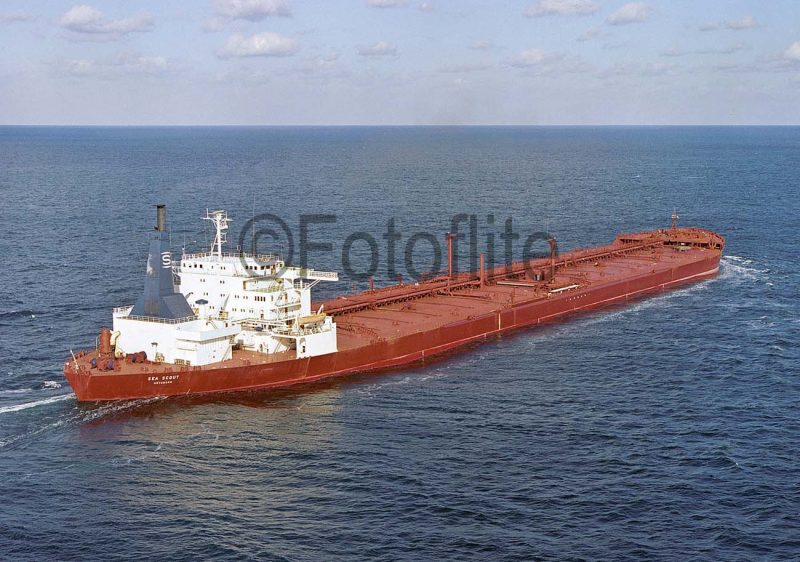
The Rex Line acquisition plus that of Brodin Shipping A/B in 1970, with the vessel Ingrid Brodin taken over, formed part of Salen Dry Cargo, a significant bulker and ore/oil carrier owner. Baltic Ore of 18,500 dwt was purchased in 1969, and the ore/oil carriers Korshamn of 12,980 dwt and Kungshamn of 9,740 dwt were purchased in 1970. A range of bulkers was purchased in the 1970s decade, including British Wasa of 18,267 dwt, Baltic Wasa of 18,340 dwt, Irish Wasa of 15,440 dwt, Scottish Wasa of 15,912 dwt, Cornish Wasa of 20,022 dwt, Finnish Wasa of 24,664 dwt, Scandic Wasa of 20,280 dwt, Nordic Wasa of 27,300 dwt, Arctic Wasa of 23,400 dwt, Pacific Wasa of 68,820 dwt, the wood chip carrier Forest Wasa of 37,841 dwt, Delphic Wasa of 23,151 dwt, Gothic Wasa of 23,323 dwt, and Irish Wasa (2) of 27,738 dwt. Several of these bulkers were owned under the Red Duster company of Spanocean Line Ltd. managed by Salen U.K. Ship Management Ltd., formerly known as Whitco Marine Services Ltd. of Bristol. This company managed eight Salen bulkers and reefers trading worldwide.
Death Of The Founder
Sven Salen passed away on 29th October 1969, just six days after his last public duty when attending the launch of the VLCC Saga Sovereign at the Malmo yard of Kockums. He was remembered as an important shipowner, but also as a Swedish yachtsman in the Summer Olympics of 1936 and 1952. In 1936, together with his wife Dagmar Salen, he won a bronze medal in the mixed six metre class as the helmsman of his yacht May Be. Sixteen years later, he finished fourth as the helmsman of his yacht May Be VII in the same event. His sailing career had been boosted in 1927 after his team won the six metre event at the unofficial World Championships, taking the Gold Cup at Oyster Bay near New York. He had married Dagmar Morner, daughter of a baroness, in 1931 and they had two sons Sven Hampus Salen and Christer Salen. He was also a singer songwriter and a founder with Ulf Peder Olrog of the Swedish Song Archive. He was also a classical music composer and lyricist, his music was recorded by Jussi Bjorling on an album of romantic songs.
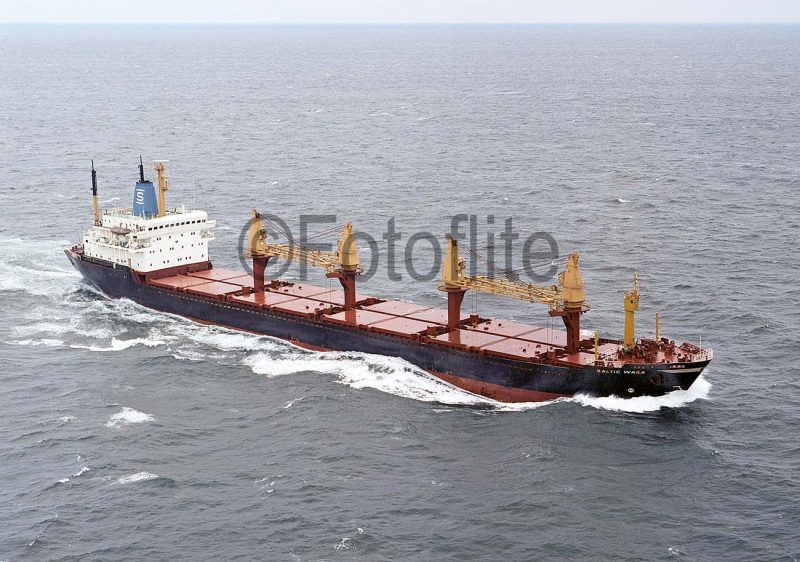
The next Salen generation of Sven Hampus Salen and Christer Salen took over the Salen Group after the death of their father. Christer Salen had already taken over the Refrigerated Shipping Division in 1963, while Sven Hampus Salen had taken over the Tanker Division in 1966. The brothers formed their own company Salenia, with Salenrederierna renamed as Salinvest in 1976 as a publicly quoted company on the Swedish Stock Exchange.
Major acquisitions in the 1970s were the large Gothenburg shipyard of Gotaverken in 1971, with six large building docks, selling it back to the Swedish State six years later after a troubled period in 1977.
The Finnboda Varv A/B yard in Stockholm was also owned during this period. Salen and Wicander was another Group company founded in 1946 as a general trading company with interests varying from Rolls Royce aero engines, Toyota car agency, Kawasaki motorbikes and Siwertell tank cleaning systems.
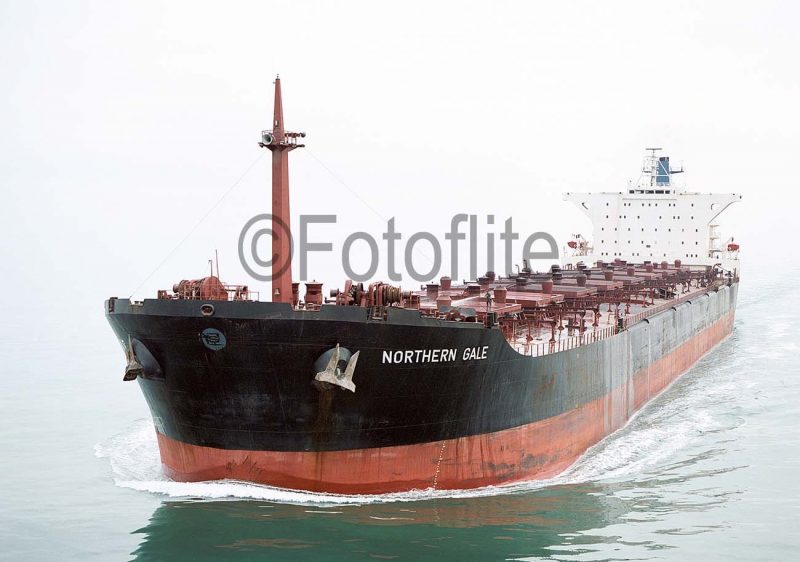
The first of several air freight and passenger companies was founded in 1970 as Cargolux, based in Luxemburg, holding this company in the Salen Group for the next 21 years until 1991.
The office block Salen House was completed in 1975 in central Stockholm, with much space on several of its floors sold off between 1979 and 1983 at a good profit.
Opec Oil Price Hike
The very serious huge 70% increase in the price of crude oil by the OPEC oil producing countries in November 1973 had catastrophic repercussions in the oil and shipping industries and an immediate surplus of one fifth of tanker capacity as nobody wished to pay such high prices for oil and consumers switched to gas, electricity and other forms of energy.
Petrol prices rocketed, with many cars taken off the roads as people switched to cheaper forms of transport.
The tanker market stayed in overcapacity, with half or more of all oil tankers considered surplus to requirements, all the way through the 1970s and the first half of the 1980s.
Tanker overcapacity was only reduced by severe scrapping of huge numbers of unwanted tankers and VLCCs, and was disguised by slow steaming, carrying only part cargoes, and the use of many of the remaining tankers as oil storage hulks near to the oilfields.
The decision to order seven VLCCs of 360,000 dwt after this severe shock to the system was ill advised, with Sea Saga, Sea Saint, Sea Scape, Sea Serenade, Sea Song, and Sea Stratus, delivered between 1974 and 1976, going straight into lay up at Stromstad, just south of the Swedish and Norwegian border and one hundred miles north of Gothenburg. A dozen Salen owned VLCCs and smaller tankers were sold off by 1978, reducing the total fleet capacity by one half. Sven Hampus Salen and Christer Salen then sold off the remaining tankers by 1980, with only a few of the biggest tankers retained. Most of the the bulkers of Salen Dry Cargo were also sold off, instead bulkers were chartered for the transport of coal, wheat, ores of all kinds, and timber e.g. the seven hold Panamax bulker Northern Light of 65,592 dwt and the larger Northern Gale of 107,750 dwt. The enormous financial losses racked up by the tanker fleet, however, was to put the whole Salen fleet into jeopardy, and lead to bankruptcy.
An offshore jack-up drilling rig named Salenergy 1 for Salen Offshore Drilling Company of Stockholm with offices in Houston (Texas) was commissioned in March 1976 at the Beaumont (Texas) yard of Bethlehem Steel as the first ever Swedish drilling rig. Mrs. Goran Axell, wife of the Chairman of Salen Offshore Drilling Company, was the sponsor, and among the guests was Sven Hampus Salen, who had founded the company. The rig was designed for drilling in up to 250 feet of water with a drilling pipe length of 20,000 feet and was used in the Gulf of Mexico and worldwide on various contracts, making a profit instead of the losses racked up by the tanker fleet. She had three cylindrical legs each of length 312 feet and 12 feet in diameter, with a crew of 80.
Salen Bankruptcy
The financially strapped Saleninvest, which had lost the huge amount of $184 million during the decade from 1974 to 1984, filed for bankruptcy on 19th December 1984, in one of the largest collapses in shipping to date. A petition was on this date handed to the District Court of Stockholm for the winding up of the company, which had been hard hit by the OPEC oil price hike and the freight rate shipping crisis of the early 1980s. An impasse had arisen with Swedish banks and the Swedish Government over the amount of loan guarantees required to keep the fleet trading. The bankruptcy was, however, significantly more expensive for creditors than a reconstruction of Saleninvest would have been. The poor freight rates, high dollar exchange rate, and over optimism on the part of Saleninvest directors had led to the bankruptcy of the company, which had lost huge sums of money during seven of the last ten years of trading.
Salen Group employed 2,100 office and seafaring staff just previous to the bankruptcy, the vast majority of whom lost their jobs as there was no hope after a loss of $112 million had been racked up during the year of 1984. The Swedish Government paltry offer of only three million Swedish kroner in loan guarantees fell well short of the immediate needs of the company. The whole of the Salen fleet was sold off to the banks and its creditors to salvage some of the tied up capital.
A Fresh Start
During 1985, Sven Hampus Salen bought out Christer Salen from their mutually owned company Salenia. Christer Salen then bought out Salenia’s British subsidiary Exxtor, part of TOR Line which had not been sold off to DFDS. Christer Salen thus had a new base and concentrated on the air travel industry, including the purchase and sale of old aeroplanes, and buying a stock of aero spare parts to sell spares to the big air fleets still flying the older models of planes. Christer Salen was also a participant in two charter plane companies in Britain, as well the regular airline Aurigny, with small, yellow painted Trislander planes carrying as little as six teen passengers to the Channel Islands of Alderney, Guernsey and Jersey.
Christer Salen also purchased the cruise expeditionary ship Caledonian Star in 1989 with two partners, with a new adventure cruise ship delivered in 1990 as Frontier Spirit, but he sold his interests in the vessels to his two partners in 1991. The last time the Salen family owned cruise ships was in 1982, when they focused on Arctic and Antarctic adventure cruising with the ships Lindblad Explorer and Oresund, the latter being rebuilt and renamed Lindblad Polaris. However, this cruise activity was not to be continued by the Salen family as their shipping empire had racked up severe losses.
Sven Hampus Salen began afresh with share dealings in financial and trading companies, including the shipping companies of Stockholm Tanker Chartering, Cool Carriers, and the revived dry bulker company Sven Salen A/B. He thus had a new base in Sven Salen A/B, and then acquired Scandocean and a complex deal with Uddevalla Shipping. The latter company had a tanker fleet and strong assets on its Balance Sheet, and was later renamed Frontline and later still was sold to Norwegian tanker magnate John Fredriksen. Sven Hampus Salen also entered the air travel industry in 1987, leading to the formation of the largest Swedish domestic airline Skyways in 1992.
Staffan Salen and his brother Erik Staffan, sons of Sven Hampus Salen, began dealing in a portfolio of shares in the 1990s with two million Swedish kroner inherited from their paternal grandmother. Staffan Salen also began a publishing career, becoming editor of Finanstidningen, as well as Managing Director of a Swedish bank, while Erik Salen took over the new business interests of his father Sven Hampus Salen, who phased out his involvement from 2003. Staffan and Erik Salen began a number of trading companies abroad, including using an offshoot of the former oil prospecting and drilling company Salen Energy. Shipping agencies in Singapore, Heineken agencies in China, as well as interests in seafood, natural fibres and animal by products companies lead the brothers to purchase an interest in Higman Marine, a tug and barge operator that later grew to be the third largest operator on the American intracoastal waterways.
The grandchildren of founder Sven Salen, and children of Christer Salen, soon made their mark in business after the Millennium. Jonny Salen moved into telecommunications companies in China and Hong Kong, while Oscar Salen and his sister Katarina Oscar had interests in the bulk shipping company Argonaut A/B with a base in Gothenburg. This had been set up in 1983 by Salen Managing Director Gunnar Rosengren as an offshoot of the tanker business, and later was known as N & T Argonaut A/B, formed on 13th February 1998 by the amalgamation of Argonaut A/B with Nordstrom and Thulin A/B.
The cruise travel agency Noble Caledonia was founded in 1991 and was principally engaged in the British cruise market, with Katarina Salen involved from the start as an expedition guide. She began her own travel agency Polar Quest in 1999 along with her husband, and seven years later an opportunity arose for Katarina to purchase Noble Caledonia. Salen Ship Management was established in 2010 to technically and hotel manage the three cruise ships in the Noble Caledonia fleet, the former mini cruises ships of Renaissance Cruises and then named Island Sky, Caledonian Sky and Hebridean Sky.
Island Sky spends her summer in Europe and winter in the Indian Ocean, sailing as far north as Spitzbergen and as far south as the Seychelles, Mauritius and Sri Lanka offering cruises from the cruise markets of Britain, Norway, France, Spain, Mediterranean countries, and United Arb Emirates and India. Caledonian Sky operates in the Eastern hemisphere, covering most of the Pacific Ocean from the Russian Far East and Alaska to New Zealand in the south, as well as from Singapore across the Pacific to Easter Island. Hebridean Sky operates adventure cruises in the Arctic and Antarctica as well as along the Pacific coast of South America and Cape Horn, amd also to the Canary Islands and Cape Verde Islands.
Noble Caledonia has provided cruises to remote destinations for 25 years, and today operates to three hundred worldwide destinations with three small, luxury cruise ships that can enter very small ports. The technical and hotel management of this fleet is operated by Salen Ship Management A/B of Gothenburg, which runs a very ‘hands on’ operation using permanent staff including Masters and Navigating Officers, Chief Engineers and Hotel Managers.
Postscript
The Salen family owned over two hundred ships during their century of shipowning, and chartered many more. Some of the latter ships included the Greek reefers Apollonian Spirit ex Bolero, Apollonian Light ex Ballade, Itahaki Kathera ex Barcarolle chartered back after sale in the mid 1970s, and the ro-ro Merzario Gallia of 8,696 dwt built in 1977 at Kiel and later renamed Nordic Wasa and Tor Anglia. The Salen family tanker business had grown into one of the greatest tanker fleets in the world, with fifteen VLCCs of up to 360,000 dwt completed between 1969 and 1977. The severely bad tanker freight rates after 1973 had reduced the tanker trading fleet to only three VLCCs by 1984, with this trio sold off soon after the bankruptcy. The Salen reefer fleet was also one of the biggest in the world, and in the same league as Lauritzen of Denmark, United Fruit Company of the U.S.A., and Blue Star Line of Great Britain. There are none of the last Salen reefer classes in service today, the ‘Snow’, ‘Winter’ and ‘Spring’ classes having all been broken up or foundered by the end of 2012.

In October 2015, the Salen family celebrated 100 years in business since the founder Sven Salen had purchased his first ship, the small coaster Robur, at a quay in Gothenburg. The anniversary was celebrated with historical events chronicling the family business and entrepreneurship at the Modern Museum, with a later dinner at the Nordic Museum in Gothenburg.
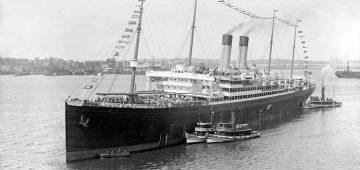
Comments
Sorry, comments are closed for this item